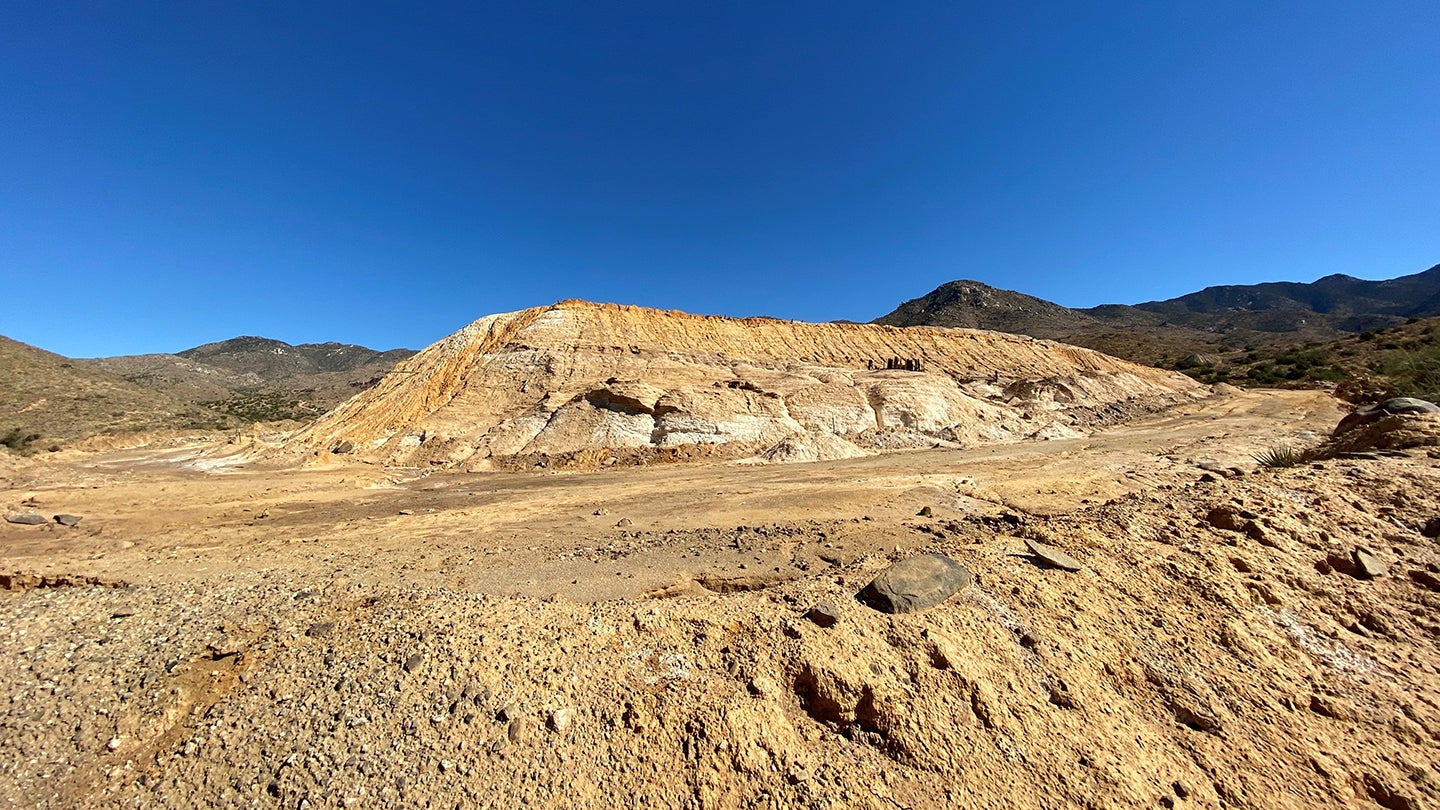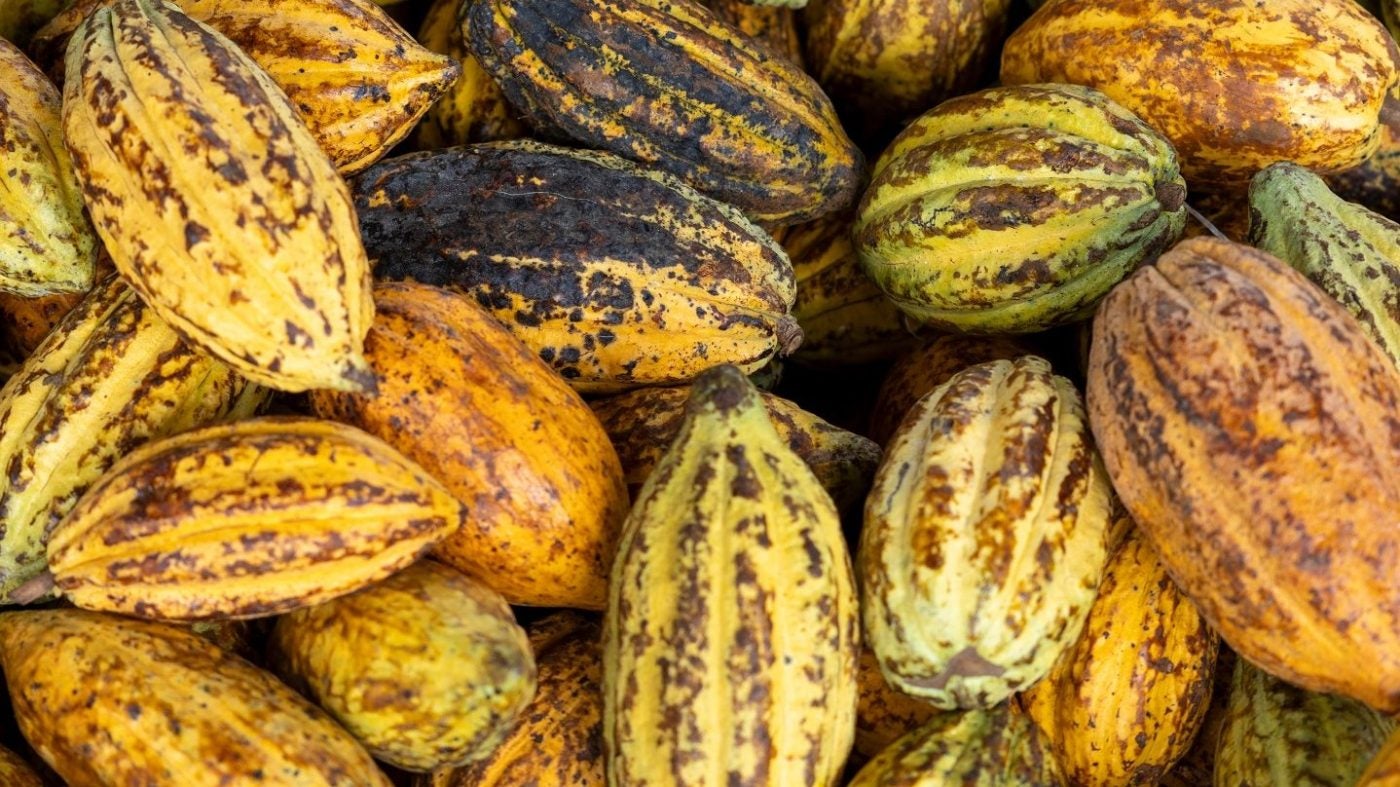
Explorer DECODED
Previous edition: 21 May 2024
Share article
Get the full version straight to your inbox.
Exclusive access to our best-in-class data & intelligence
Subscribe now
Tailings potential: recovering metals from mine waste streams
Experts believe mine tailings could provide a new source of metals and minerals that are critical to the energy transition, while also cleaning up the environment.

In the Peruvian Amazon region of Madre de Dios, the beauty of the dense green rainforest is juxtaposed against a barrage of miners digging and sifting the riverbed in search of one thing: gold.
Mining in the region causes deforestation and unfettered pollution yet it also provides a vital livelihood for locals – but what if the endless muddy-coloured mining lagoons that flood the area could be cleaned up, while also providing additional income for communities?
This is the ambition of Dr Leigh Cassidy, a former professor at the University of Aberdeen. In 2022, her company Nibeenabe piloted its device for remediation and attenuation of multiple pollutants (DRAM) technology to filter the tailings from a Madre de Dios mine extracting commodities that would otherwise be wasted.
Large amounts of silver, copper, molybdenum, chromium, cobalt and other metals were recovered, according to Cassidy, who developed the DRAM technology some years earlier.
“Artisanal miners are only interested in gold, but based on the mine we worked on we know there are significant quantities of recoverable metal being wasted and lost into the environment, causing problems with pollution,” she explains. “In the region there are thousands of these mines in the same alluvial soil, so it is fair to assume they have similar levels of commodities.”
Based on the trial project, Cassidy expects to recover around 50kg of silver a year from each mine. The next step is to raise funds for a survey of up to 20 mines in the region to identify the best sites and to prove the resource potential to investors.
After securing investment, the plan is to manufacture DRAM units nearby, using agricultural waste to make the filters. Miners can then choose to pay a subscription fee to have a unit at their site, through which waste will be filtered and collected and transported to a central hub, ran by local women, for chemical processing. Recovered minerals and metals will be sold in the commodities market and a share of the profits given back to the miners.
The model, if successful, could help clean up the region – the water left over from the filtration can be used for irrigation or other mining processes – while supporting the local economy.
Lifting the lid on tailings potential
The hypothetical riches that could be extracted from mining waste have also caught the attention of much bigger companies and organisations. In November 2023, the US Geological Survey (USGS) decided to invest $2m to study the potential for critical minerals “to prove the importance of mine waste as a source of commodities”.
The move is no doubt driven by the growing demand for energy transition metals and minerals. A report by the World Bank estimates more than three billion tons of minerals and metals will be needed to deploy wind, solar and geothermal power, as well as energy storage, to achieve the Paris Climate goal.
There are an estimated 282 billion tons (bt) of abandoned tailings waste facilities and 16bt of active facilities globally, representing a potentially huge resource of critical minerals including copper, cobalt and rare earths.
“The commodities we were using 30 years ago are very different from what we are using today, many things we now consider valuable were then treated as waste,” explains Simon Jowitt, the Arthur Brant chair in exploration geology and director of the Ralph J. Roberts Center for Research in Economic Geology at the University of Nevada.
Jowett, who has been working in mine tailings research in the US and Australia for more than a decade, is leading a programme at the university to catalogue and characterise around 20,000 mine sites in the state that are at least 30 years old. The team has applied for a grant with Rio Tinto to explore its Kennecott mine and the US Department of Energy to search for rare earths at the Mountain Pass rare earth mine and processing facility.
“We need to understand what is out there; what has been missing is the precompetitive data to stimulate interest but that data will come with the USGS’ support,” he says, adding: “All mine tailings are different, so this mineralogical and geochemical characterising is important.”
Developing extraction methods for tailings waste
Last year, Geoscience Australia, the Royal Melbourne Institute of Technology and the University of Queensland completed the Atlas of Australian Mine Waste, which recorded more than 1,000 sites to make large tailings easy to find. In tandem with cataloguing and knowing what is out there, it is important to develop methods of extraction, which academics are already working on, supported by major mining companies.
Rio Tinto has invested $2m (£1.58m) in non-profit organisation RESOLVE, which launched a start-up called Regeneration. The company plans to use the re-mining and processing of waste from legacy mine sites “to support rehabilitation activities and restore natural environments”. In April it partnered with Cobalt Blue Holdings to work on technology to do just this.
The same month Rio Tinto awarded $875,000 to a Missouri University of Science and Technology professor for a two-year project researching new techniques to recover critical minerals in waste byproducts from copper extracting and refining.
Barrick is also exploring the possibility of critical metals recovery at Nevada Gold Mines, a joint venture with Newmont. The project will specifically target nickel, cobalt, scandium, zinc, and potentially other metals, using an ion-exchange recovery system to extract from heap leach copper solutions.
The type of extraction method that can be used on mine waste depends on the mineral deposits the tailings come from and what processing approach was used to generate them, says Jowitt. If similarities are found between systems, similar approaches could be used across tailings facilities.
“If a Porphyry system has been used in Arizona, for example, it is likely a Porphyry system used in Chile will be very similar and can potentially use the same method,” he says.
Alaska Energy Metals CEO Gregory Beischer, who is also a geologist and technical engineer, says several technologies have already been developed and successfully trialled to recover critical minerals from mine tailings. Most of them are hydrometallurgical-based – such as flotation, solvent extraction and bioleaching.
However, he adds: “One challenge is the geographical location of a tailings site; some countries have rigorous tailings management programmes – the US and Canada, for example – while others, like Indonesia, do not.”
Environmental and social gains
It is currently unclear what the overall potential of extracting metals and minerals from tailing waste could be, but Jowitt believes there is value to be had.
“I think the fact companies are actively looking into this shows that there is,” he says. “I don't think every single tailings pile and mined waste site will be economically prospective, but I think unless we actually move to understand all of these sites, we will never know what potential value there is.”
He adds that in the US, while there is good government funding to support related technologies and innovation, a so-called ‘Good Samaritan Law’ that removes some liabilities currently attached to former mine sites would make it more attractive to companies.
As Cassidy highlights, there is also social and environmental value in this work, as in many cases, particularly in the Madre de Dios region, it will help clean up what is essentially hazardous waste.
“I am calling it environmentalism by stealth, but it is really just a carrot and stick – rewarding people for looking after the environment,” she explains.
Furthermore, all active and abandoned mine waste facilities represent a significant risk for both companies and local communities – as the breaching of the Brumadinho dam disaster, which killed 270 people at the Vale Córrego do Feijão iron ore mine in Brazil, demonstrated in the extreme.
Targeting extraction from mine tailings waste, and cleaning it up in the process, therefore has the potential to be a win-win for locals, governments and mining companies. For the latter, not just from an economic perspective but from a reputational one, too.
Latest news

Warburg Pincus and Temasek to buy UK's Specialist Risk Group
SRG, a UK-based insurance intermediary, has entered a definitive agreement for acquisition by private equity investor Warburg Pincus and Singapore’s Temasek.

Hines celebrates groundbreaking of Northspur community in Texas, US
Hines and real estate investment company Trez Capital have celebrated the groundbreaking of Northspur, a 700-acre master-planned community in Terrell, Texas, US.

Informed of Challenger 3, Oman has decision to make with its Challenger 2 tanks
It is unknown whether Oman would seek to acquire the remaining 50-60 Challenger 2s from the UK after the upgrade of 148 platforms to Challenger 3 is completed.

AstraZeneca to establish $1.5bn ADC production site in Singapore
The design and construction of the site will begin by the end of 2024, to be operational by 2029.

Oil market faces uncertainties after Iranian president's death
Although oil prices rose following the news of President Ebrahim Raisi’s death, GlobalData does not expect a long-term impact on oil markets.

Stellantis' Tavares and his delicate Leapmotor balancing act
Managing a global OEM with many brands is a complex business, even more so with the Leapmotor JV

Investors call on chocolate giants to boost cocoa farmers' wages
Chocolate processing giants are being asked "to end exploitative purchasing practices" in west Africa.

Morrisons faces lawsuit over £2.5bn petrol forecourts deal
Bouygues expects the court to affirm its exclusivity rights on the sites and seek damage from Morrisons.

Explainer: Seoul AI Safety Summit, the state of play for AI regulation
South Korea is hosting the AI Safety Summit today (21 May) in collaboration with the UK following the UK's inaugural AI Safety Summit in Bletchley Park last November.

Nearly 3-in-4 SaaS product managers plan to implement embedded finance: Weavr
The majority of B2B SaaS product managers plan to adopt and utilise embedded finance as part of their near-term roadmap. Research released by embedded finance company Weavr is set out in a white paper entitled ‘The next step for B2B SaaS’.
In our previous edition

Explorer Decoded
Analysis: has OpenAI set a new industry standard in AI accessibility?
15 May 2024

Explorer Decoded
Customer satisfaction with US online-only banks declines
10 May 2024

Explorer Decoded
UK retail sales drop 4% in April 2024 amid poor weather
08 May 2024
Newsletters in other sectors
Aerospace, Defence & Security
Travel and Tourism
Search companies, themes, reports, as well as actionable data & insights spanning 22 global industries
Access more premium companies when you subscribe to Explorer


